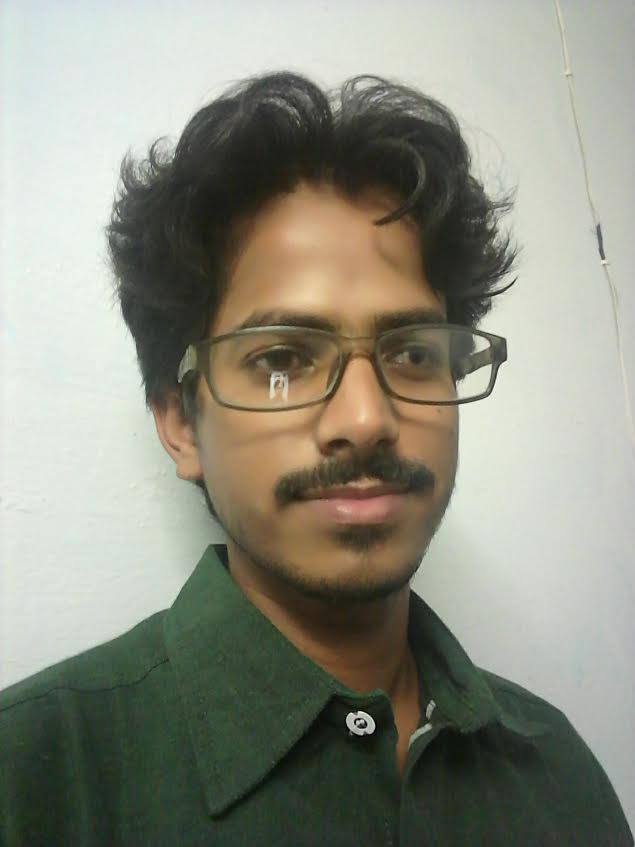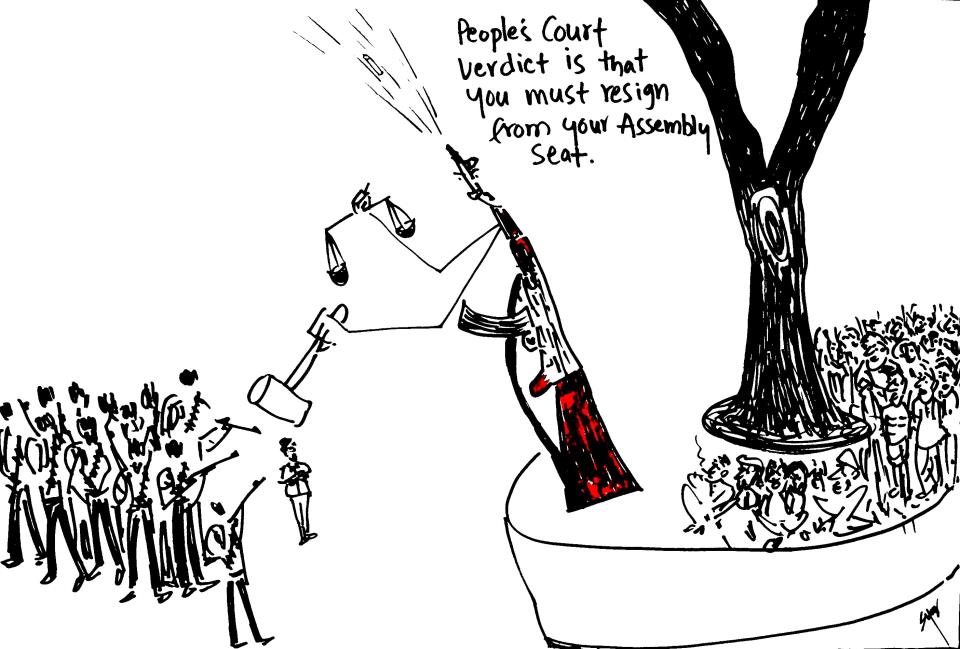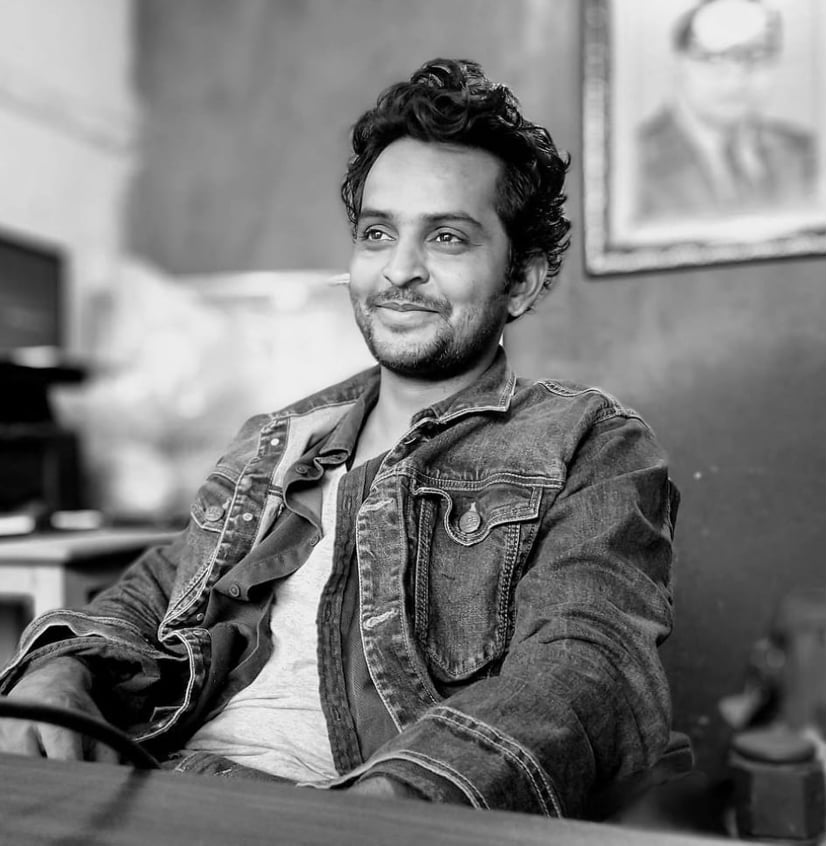Veewon Thokchom
 With the release of the Bollywood movie “Axone” directed by Nicholas Kharkonger, a debate on racism has been ignited. Though the movie could not have been worse than it is when it comes to racism, it at least has sparked off a discourse on racism faced by “Northeast” yellow people in Indian metropolitan cities. And this is the moment that we have to seize. A dialogue on not the movie in particular but racism at large in this country; a talk on race and colour – brown and yellow.
With the release of the Bollywood movie “Axone” directed by Nicholas Kharkonger, a debate on racism has been ignited. Though the movie could not have been worse than it is when it comes to racism, it at least has sparked off a discourse on racism faced by “Northeast” yellow people in Indian metropolitan cities. And this is the moment that we have to seize. A dialogue on not the movie in particular but racism at large in this country; a talk on race and colour – brown and yellow.
As a starting point to this dialogue, it is essential to state that one need not have to believe in the objective existence of race to be able to enquire the social, political and cultural relevance of the “idea of race.” The question of race needs our attention to have a firm grasp on how race is socially and discursively constructed to maintain a structurally hegemonic relationship between people. Talking about race is not enforcing racial difference but it rather seeks to critique the oppressive relations that come along with relationships amongst races. It is also important to note that the usage of the colour code, i.e. brown and yellow, is equally important to decipher the complex nature of race and racism, just as how the usage of the word “black” became popular in the United States during the civil rights movement in the 1950s and 60s.
Racism at Home
While the movie functions as the basis of the current debate on the problems of racism faced by yellow people in Indian metropolitan cities, it is worthwhile to investigate this problem from a different vantage point. Though it is irrefutable that every yellow person from the Northeast who travels to Indian mainland cities for education or job opportunities has faced overt racism, it would be more incorrect to say that the person has not come across “racism” at home. Because the racism at home is the more brutal form of institutionalised legally sanctioned (AFSPA, 1958) form of population subjugation, control and disciplining. And this manifests itself in the form of persistent militarisation that has been existing in the region for decades, whose demonstration can be physically or traumatically experienced in Manipur through mass fake encounter (1528 cases on which the Supreme Court constituted a CBI Special Investigation Team on July 14, 2017 after a writ petition was filed by EEVFAM and Human Rights Alert in 2012), number of massacres over the decades (Tera, RMC, Oinam, Malom etc.) and instances of rape and mass rape (Oinam incident,Manorama, Ahanjaobi, Mercy), in many cases the survivor killing herself from shame and despair (Rose Ningshen, etc.).
The point here is that, a Northeast body becomes an object over which a hegemonic racial power is exercised throughout her life, both at home and the brown mainland societies. The more hideous nature of the racism at home is its character to remain unnoticed and therefore questioned.
The abnormality that was created with the persistent militarisation decades after decades made the generation who grew up in the 1990s take refuge in places like Delhi and Bangalore only to go through another form of racism. It was in the 1990s and the 2000s that every parent who could afford started sending out their children as an escape from the imposed political climate of uncertainty.
Mary Kom and National Glory
It was in 2012 that thirty thousand Notheastern people fled Indian metropolitan cities in fear of racial attacks. Around the same time, Mary Kom became the embodiment of “national glory,” turned into a national icon overnight and returned to India after winning a bronze medal in London Olympics. As the exodus continued for weeks, the issue of racism was taken up by the Indian media as well as its academicians and the public. The peculiarity of the discourse was such that Mary Kom was constantly invoked to challenge the existence of racism in India. Previously the same year, Richard Loitam, a Manipur boy in Bangalore was killed in a racist attack by his seniors in college. In the public outrage from the Northeast people that followed, the then Prime Minister Manmohon Singh was compelled to make a statement on the racist killing, only to deny any racial motivation in it. And, as Mary Kom became the presentable Northeast face at the national level, a new path to integration of a troubled region was opened – sports.
Racism and Bollywood
A real test of the authenticity of the presentable face of Mary Kom to the nation came in 2014, just two years after the moment of national glory, when a brown Bollywood actor, Priyanka Chopra, was chosen to play the role of Mary Kom in her biopic. The insensibility of the actor to the question of racism became all the more vicious and visible when she claimed in an interview that she had to undergo surgery on her eyes and nose to get a mongoloid facial appearance.With this, another act of denial of the existence of a race and racial injustice was achieved, though the dominant racial group who committed the erasure would hesitate to call the act racism. In a repetition of history in Bollywood, six years down the line after the “Mary Kom” movie, in an online video interview, the Bengali actor Sayani Gupta who played the Nepali character Upasana in “Axone,” endorsed facial surgery for her role and said, ‘there was nothing wrong in that.’
In the first month of 2014, the year “Mary Kom” was released, Nido Tania, an Arunachali boy was brutally lynched by a racist mob in Lajpat Nagar, Delhi, when he stopped by to ask for directions. The incident was enacted in “Axone” with the character of Bendang. What appalls viewers of the movie, especially people from the Northeast who have had experience of overt racism in Indian metropolitan cities is that Bendang becomes the constant target of his own horrifying experience and has to live a traumatic life. In a classic example of victim-blaming, the cause of his tragedy becomes his aversion and weakness to mingle with Delhihites, and not the racist attackers themselves.
‘Not Being Bias’ in Racism
Racism is so simple yet immensely complicated to understand that we miss out a lot when we look at it through personal experiences and discard its more crucial systematic, structural, political and historical aspects. The language of racism is so complex that it can take new shapes at different times – from Negro to Nigger to ghetto to thugs to thieves in the American context. From Nepali to chinky to momo to chowmein to randi to corona in Indian mainland societies. This categorisation and characterisation exist as a tool of othering and marking of territory by the dominant racial group.
In another case, if the idea of ‘not being bias’ in racism as the “Axone” director Nicholas Kharkonger believes holds true ethically, morally and politically, Richard Loitam and Nido Tania would be alive today watching his movie. If we anticipate a dystopian trend of Bollywood as a follow-up to this movie, there would come a day when the departed souls of Richard and Nido will become a commodity to be marketed in the name of racism while actually remaining complacent in it.
~~~
Veewon Thokchom is a Research Scholar at the Dept. of History and Ethnography, Mizoram University.










